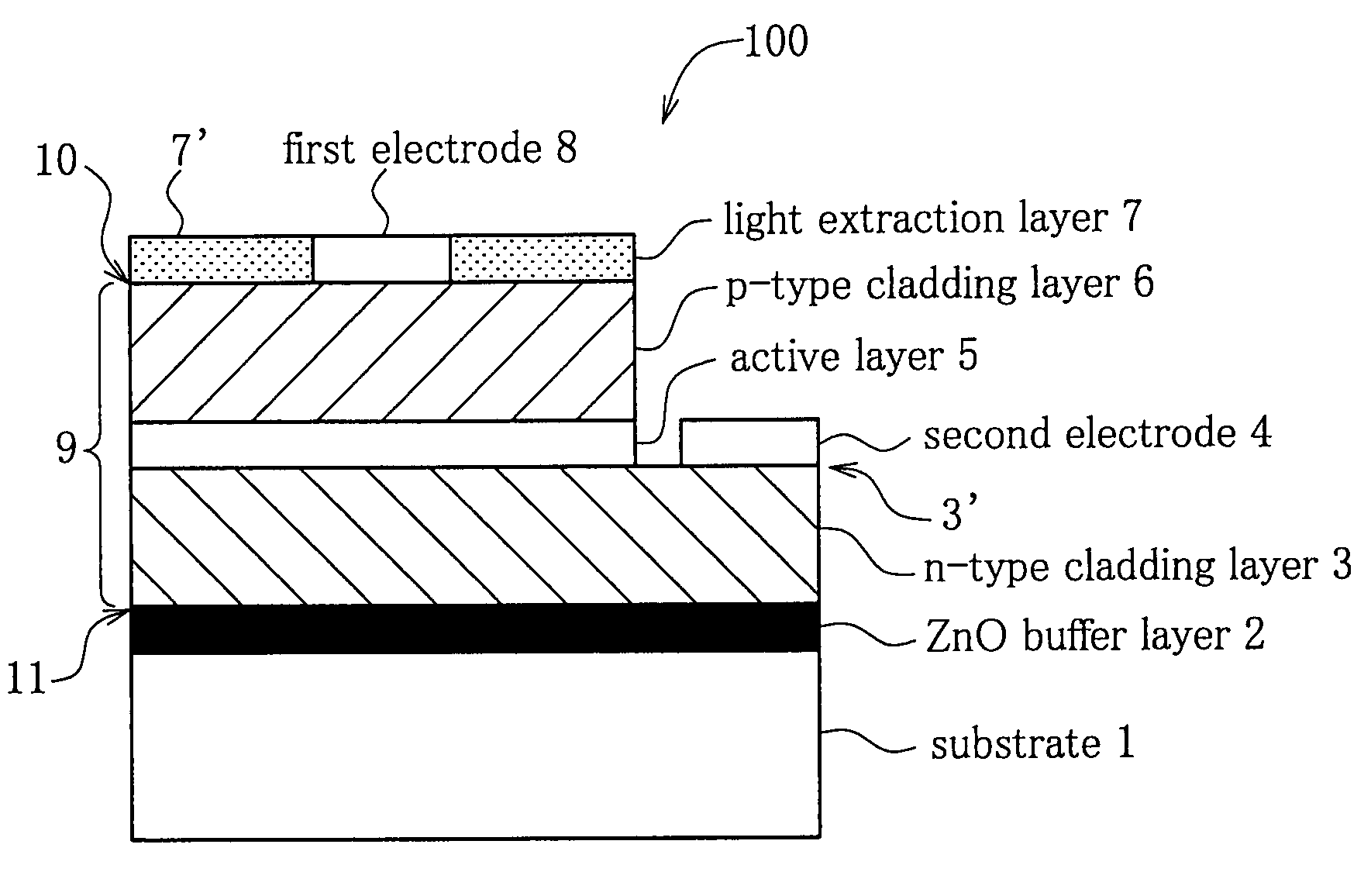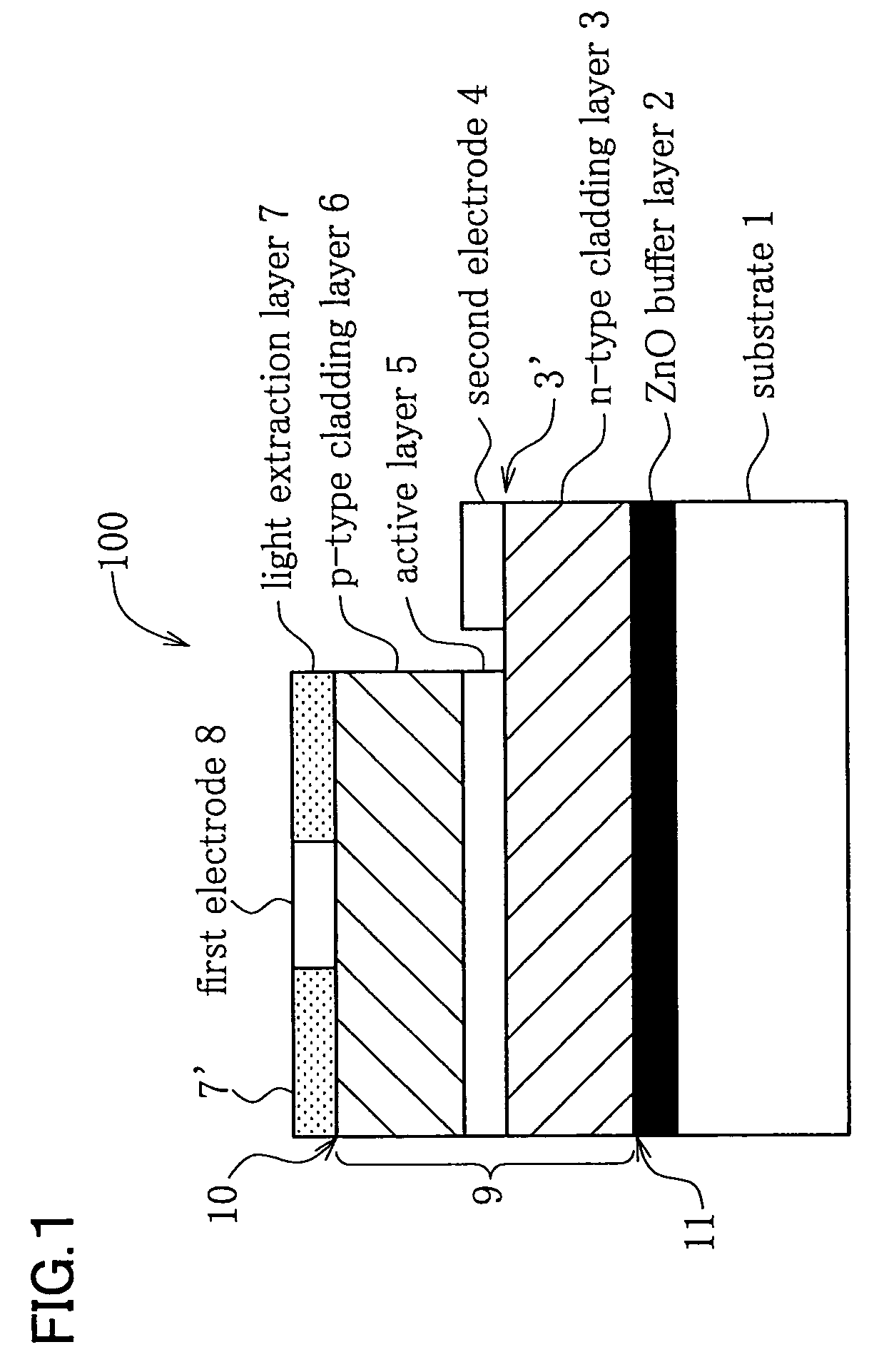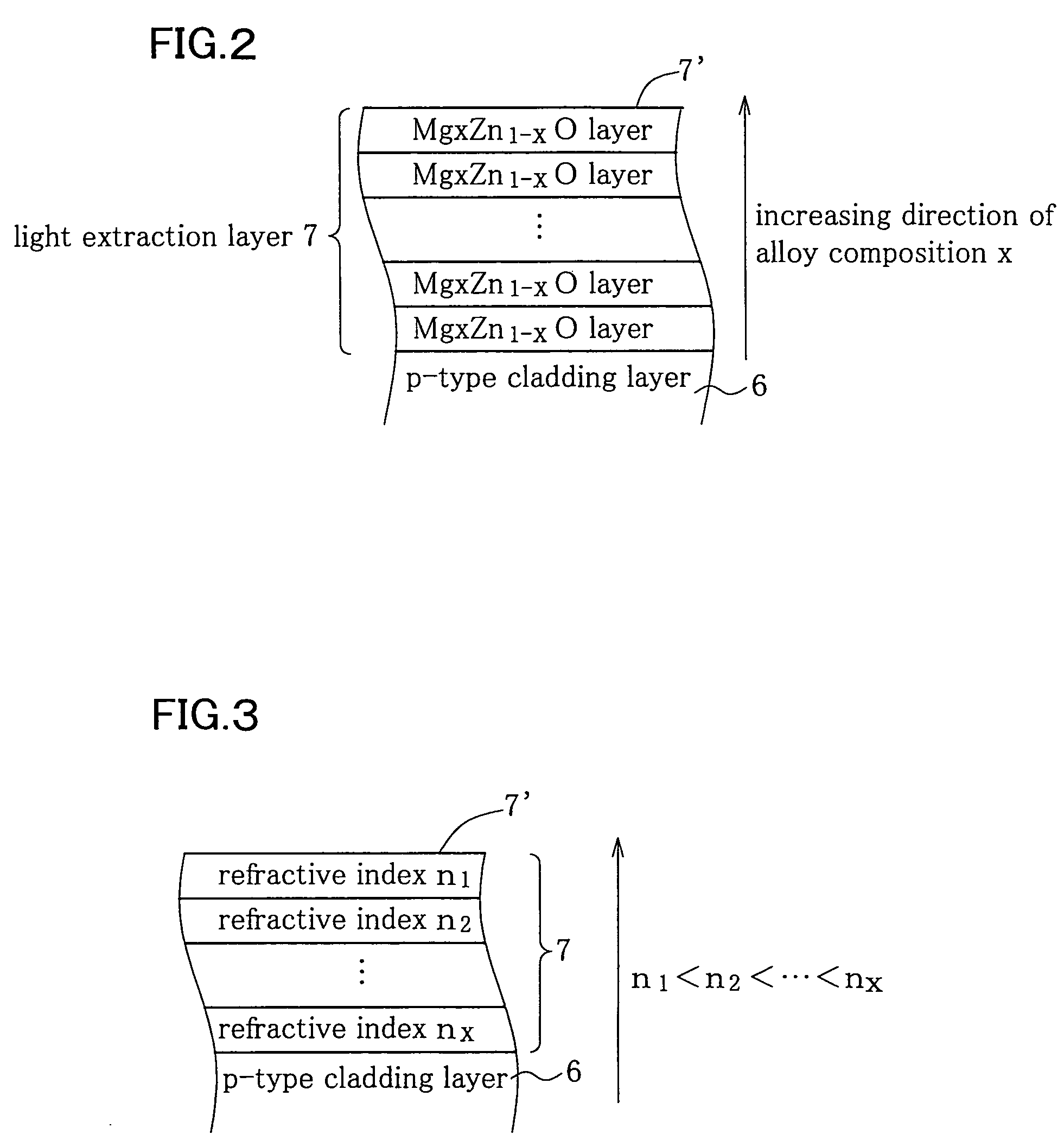Light emitting device and method of fabricating the same
a light emitting device and light-emitting technology, applied in the direction of semiconductor devices, basic electric elements, electrical apparatus, etc., can solve the problems of difficult use of low-refractive-index materials, achieve enhanced expression of effects, reduce total reflection, and increase light extraction efficiency
- Summary
- Abstract
- Description
- Claims
- Application Information
AI Technical Summary
Benefits of technology
Problems solved by technology
Method used
Image
Examples
example
[0061]In this example, two types of the light emitting devices 100 having
[0062](1) no light extraction layer 7 (conventional example); and
[0063](2) the light extraction layer 7 only composed of the MgO layer (refractive index: approx. 1.7); are compared for the light extraction efficiency, where each light emitting device 100 being configured, as shown in FIG. 1, as having the active layer 5 composed of zinc oxide (ZnO), the p-type cladding layer 6 composed of the MgZnO-type oxide semiconductor, and being covered by an epoxy resin as a protective film on the outer surface thereof. The resin used herein is such as having a refractive index of approximately 1.5 (e.g., epoxy resin, etc.). The light extraction layer 7 is formed on the outer side of the p-type cladding layer 6. It is to be noted that, in this example, the individual interfaces are assumed as being formed flat, and light emitted from the active layer 5 is assumed to completely follow Snell's Law. The cladding layer herein...
PUM
 Login to View More
Login to View More Abstract
Description
Claims
Application Information
 Login to View More
Login to View More - R&D
- Intellectual Property
- Life Sciences
- Materials
- Tech Scout
- Unparalleled Data Quality
- Higher Quality Content
- 60% Fewer Hallucinations
Browse by: Latest US Patents, China's latest patents, Technical Efficacy Thesaurus, Application Domain, Technology Topic, Popular Technical Reports.
© 2025 PatSnap. All rights reserved.Legal|Privacy policy|Modern Slavery Act Transparency Statement|Sitemap|About US| Contact US: help@patsnap.com



